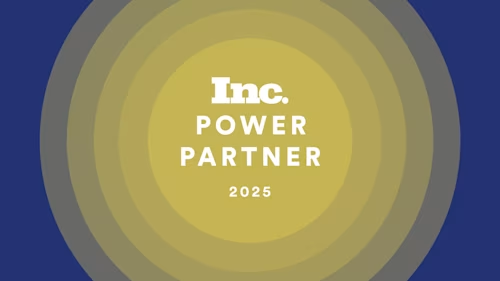
Using Healthcare Contract Management Software to Simplify Value-Based Contracts
As more providers in the US implement value-based contracts, see how insurers can use healthcare contract management software to support quality and efficiency.

A new trend in healthcare is emerging. Around the U.S., providers are implementing value-based contracts, which focus on quality of patient care rather than quantity of health services. In fact, 57% of today’s healthcare professionals participate in “value-based reimbursement.”
The goals of value-based contracts are noble and the benefits are far-reaching. However, on the insurance or “payer” side of the healthcare industry, significant advancements in infrastructure are often needed to support the additional processes and complexities that value-based contracts bring to the table. As more healthcare providers adopt an outcome-based approach to medicine, payers that continue using manual or paper-based methods of contract management will face greater inefficiency.
In this post, we’ll highlight the advantages of value-based care and discuss a few ways that digital contract lifecycle management (CLM), i.e., healthcare contract management software, can provide your organization with an easier and more cost-effective way to support a healthcare model that benefits everyone—from healthcare professionals to the communities they serve.
What are value-based contracts?
The concept of value-based care is simple: patients and insurers should only pay for outcomes that are achieved. According to the Centers for Medicare and Medicaid Services, value-based healthcare can also include any program that “rewards health care providers with incentive payments for the quality of care they provide.”
Traditionally, healthcare has operated under a fee-for-service (FFS) system, which rewards quantity—not quality—of healthcare. Most healthcare providers, patients, employers and insurers agree that it’s time to migrate away from a model motivated by increasing the quantity of healthcare transactions towards one based on positive outcomes and motivated by quality of service. It won’t happen overnight, but the end goal of value-based care and value-based contracts is to create a sustainable healthcare environment that provides the best patient outcomes for the best price.
Why should health insurers care about value-based contracts?
Outcome-based agreements are complicated. The process of evaluating patient outcomes isn’t as straightforward as providing a fee-for-service. For instance, how do you attribute patient outcomes to one physician when a patient has more than one provider? Or, how do you determine whether a future illness is related to specific past treatment?
All of these contingencies require careful documentation. As a result, contracts and payment structures become difficult to manage. If your organization relies on paper-based agreements, payment cycle times can increase by weeks or even months under a value-based payment structure.
tOn average, a 1,500-bed hospital will print more than 8 million pages per month. And with an average cost of four cents per printed page, the costs add up to about $3.8 million of spend per year. Considering the pace at which healthcare practitioners are adopting value-based contracts, this cost will likely increase in the coming years. In response, healthcare organizations will seek insurance partners that can draft, organize and execute payment or compliance contracts efficiently and effectively.
How CLM solutions simplify and accelerate value-based contract payments
There’s a better way to manage value-based contracts—one that provides insurers with the framework they need to manage even the most complex agreements in a cost-effective, timely manner.
Many insurance providers and healthcare professionals rely on CLM solutions like healthcare contract management software to save time, cut costs and reduce errors during the contracting process. Providing your organization with a centralized, end-to-end CLM platform has the potential to:
Strengthen client relationships
With an automated workflow management solution, you can dramatically reduce cycle times, simplify complex agreements and support a better payment process for your healthcare partners—which will improve providers’ and patients’ experiences and strengthen your business relationships.
Reduce administrative costs
With automated workflows, payers save time and money from reduced contract cycle times. No more going back and forth endlessly through email and Microsoft Word while employees spend time tracking changes, obtaining signatures and managing documents. Additionally, costs are reduced by a more effective contracting process.
Increase visibility
Digitizing and storing your contracts in one, centralized cloud-based repository allows you to track down existing contracts in an instant. No more guessing or wondering about where a contract may reside. CLM gives you the power to keep eyes on live documents or completed agreements at all times.
Eliminate errors
Using email or Microsoft Word documents to review and approve your documents drains resources and leads to errors during the agreement generation and approval processes. In fact, after auditing one of Docusign’s major health insurance customers, errors were identified in 87% of manually managed agreements. Workflow automation streamlines and refines complex agreement processes by completely eliminating cumbersome, manual document management.
How does healthcare contract management software work?
By simplifying every stage of the document management process—from document drafting and signing to negotiation and management—an enterprise CLM system streamlines the most time-consuming components of a traditional, paper-based agreement process.
For the South Carolina Department of Health—another Docusign CLM customer—replacing manual tasks with cheaper, easier alternatives helped the organization save $2.4 million and eliminate 2.85 million paper documents in the first year. By accelerating completion rates and cutting down the time to value by as much as 80%, healthcare contract management software helps drive revenue collection without depleting resources.
In the end, finding the right CLM solution helped both organizations prepare for the future state of healthcare and increase revenue without skipping a step. Learn more about total economic impact and ROI of CLM.
Docusign CLM prepares payers for the future of healthcare
As the adoption of value-based contracts continues to increase, it’s up to healthcare insurance providers to solve for the practical consequences of increasingly complex agreement workflows. Docusign CLM helps ease the transition for health insurance providers by automating the most labor- and cost-intensive aspects of the healthcare payment process.
Learn more about how Docusign CLM can help prepare you for the future of healthcare today.
Related posts
Docusign IAM is the agreement platform your business needs



